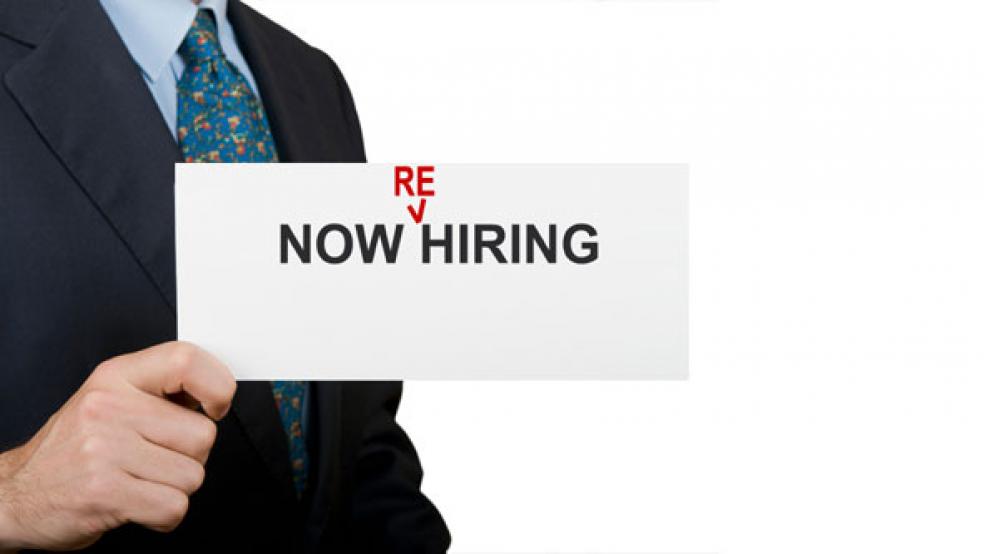There may be a silver lining in the slash-and-burn cost cutting by U.S. businesses during the recent recession. Left with a dearth of equipment, inventories and workers, boosts in equipment spending and inventory levels spurred the economy to a surprisingly robust 4.1 percent growth rate in the second half of 2009. Now these companies need to start hiring again.
An upturn in payrolls has already begun. The Labor Dept.’s March employment report showed that private-sector employers added 123,000 workers last month, the most in nearly three years. Traditional indicators of future job growth, including a longer workweek, another big gain in temporary hiring and a decline in first-time jobless claims, suggest more gains in coming months.
Continued improvement in the job markets is crucial to the recovery’s strength and staying power and companies are in a good position to boost their spending on equipment and employees. Domestically generated profits, which drive business outlays, rose 58 percent and 47 percent, respectively, in the third and fourth quarters of 2009 compared with the same quarters a year earlier, according to recent government data. More important, earnings growth has broadened from just the financial sector. Among nonfinancial corporations, after-tax profits in the fourth quarter scored the largest quarterly increase in four years, and a measure of profit margins rose to the highest mark in two years. And even as the capital markets are increasingly available to corporate borrowers, nonfinancial companies had enough cash flow at the end of last year to cover all capital expenditures without additional borrowing.
A big boost to capital spending is justified. Businesses had slashed their outlays for equipment and software as a share of Gross Domestic Product to levels not seen since the early 1970s. Some economists estimate that the overall stock of equipment had begun to wear out faster than it was being replaced, something that hasn’t happened since the 1930s. Not surprisingly, outlays for high-tech gear and other machinery soared at a 19 percent annual rate in the fourth quarter, the most in any quarter since the boom in tech spending in the late 1990s. Yearly growth rates in equipment outlays and payrolls are highly correlated.
1. PAYROLL SHRINKAGE HAS BEEN DISPROPORTIONATE TO THE DECLINE IN GDP, COMPARED TO PAST SEVERE RECESSIONS

| Percent Declines, Peak to Trough, in the Following Recessions: | GDP | Payrolls |
| 1973-75 Recession | -3.2% | -2.8% |
| 1981-82 Recession | -2.9% | -3.1% |
| 2007-09 Recession | -3.8% | -6.1% |
2. AFTER RECORD CUTBACKS, BUSINESSES ARE BOOSTING THEIR OUTLAYS FOR NEW EQUIPMENT AND SOFTWARE

| Quarter | % Change from Previous Quarter, Annual Rate |
| 2007:1 | -0.44 |
| 2007:2 | 6.50 |
| 2007:3 | 2.25 |
| 2007:4 | 4.43 |
| 2008:1 | -0.50 |
| 2008:2 | -5.01 |
| 2008:3 | -9.38 |
| 2008:4 | -25.89 |
| 2009:1 | -36.37 |
| 2009:2 | -4.87 |
| 2009:3 | 1.52 |
| 2009:4 | 19.00 |
The outsized shrinkage in employment during the recession suggests that job growth in 2010 could exceed current drab expectations of about 100,000 jobs per month. In the severe 1973-75 and 1981-82 recessions, real gross domestic product and employment fell 3.2 percent and 2.8 percent, and 2.9 percent and 3.1 percent, respectively. In the 2007-09 slump, real GDP dropped 3.8 percent, while payrolls contracted by a massive 6.1 percent. The result is a hiring gap that widened rapidly in the second half of last year, as economic growth picked up considerably, while businesses continued to shed another one million workers.
Productivity in the nonfarm business sector, measured as output per hour worked, grew at annual rates of 7.6 percent, 7.8 percent and 6.9 percent, respectively, in the second, third, and fourth quarters of last year. That three-quarter pace was the fastest in 60 years; it reflected output growth of 2.9 percent, while hours worked fell 4.3 percent.
Profits and productivity go hand in hand, but the recent gains in productivity are far from sustainable. In an economy expected to grow at even a moderate 3 percent pace, businesses cannot continue to stretch their existing employees and facilities the way they did last year. They will have to add more workers.
Also, signs of stronger demand can mean more jobs. Advances in inflation-adjusted consumer spending in January and February put household outlays on a path to post at least a 3 percent annual rate of increase in the first quarter, which would be the strongest quarter in three years. Some economists think consumers’ contributions to growth could be even greater, given the pickup in March retail and auto sales. Although job gains were small in this year’s first quarter, hours worked have picked up even faster, helping to boost overall household income.
But in the final analysis, job growth depends on companies’ willingness to hire. The number of job openings has begun to inch higher in recent months, according to Labor Department data. In February, there were 5.5 unemployed people per job opening. While that’s down from a high of 6.2 people in November, it’s a far cry from the 1.8 reading when the recession began in December 2007, and a sign that a full job market recovery has a long way to go. Still, with business picking up and payrolls so thin, progress this year might well be faster than most forecasters now expect.





